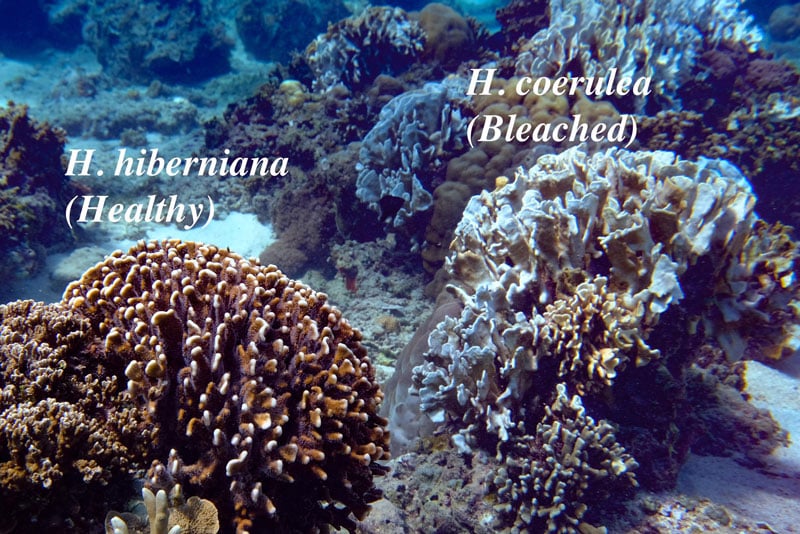Until recently, it was thought that the genus Heliopora was monotypic, with the only species described as Heliopora coerulea. However, that is quickly changing, and the Conservation Diver team is helping to increase records around the Indo-Pacific. Our finding represents the second hermatypic octocoral we have discovered in previously unknown locations, after Pau Urgell found the very rare coral Nanipora on Koh Tao in 2014.

A Reef-Building Soft Coral
Heliopora is an octocoral (mostly soft, non-reef building) however it is hermatypic, meaning that it is a reef builder. This genus is unique in that the skeleton has a blue coloration derived from the iron salts in its fibrous aragonite matrix.
This species can be traced back more than 120 million years to the Cretaceous Era and has remained mostly unchanged since. It was only in 2018 that the first records of a second species of Heliopora (H. hiberniana) was described, and only from 3 locations in Western Australia. But even then, it was hypothesized that this cryptic species could be more widespread.

Whilst working on coral nurseries in the Maldives, Conservation Diver Board Member and head of Conservation Diver Indonesia, Leon Haines noticed a Heliopora colony that did not match any seen in the guide books.
After a quick online search, he stumbled upon the newly described species and contacted the scientists with a photo to confirm his suspicions. Indeed, it was a colony of H. hiberniana over 6000 km from the area it was originally described to science!
After his time in the Maldives, Leon returned to Indonesia where he subsequently noticed H. hiberniana to actually be one of the most common reef-building corals in the Gili Islands! After working with other researchers, he published the first record of H. hiberniana outside of Australia, this time both in the Baa Atoll, Maldives, and the Gili Islands of Indonesia.
Heliopora on Future Reefs
This is a significant find, as in the future, non-scleractinian hermatypic corals may be forced to play a more prominent role in sustaining the structure of coral reefs around the globe.
These octocorals seem to be less susceptible to warming climates and coral bleaching events and may provide an alternative structure to the historic hard coral species which built them. These records are also vital to tracking the effects of climate change as the historic home ranges of various species are altered due to changing ocean conditions and can help us to predict where conservation and protection efforts will be the most effective.
We extend our sincerest congratulations to Leon for this publication and are excited to see how we can contribute to the development of the understanding of this species in the future.
